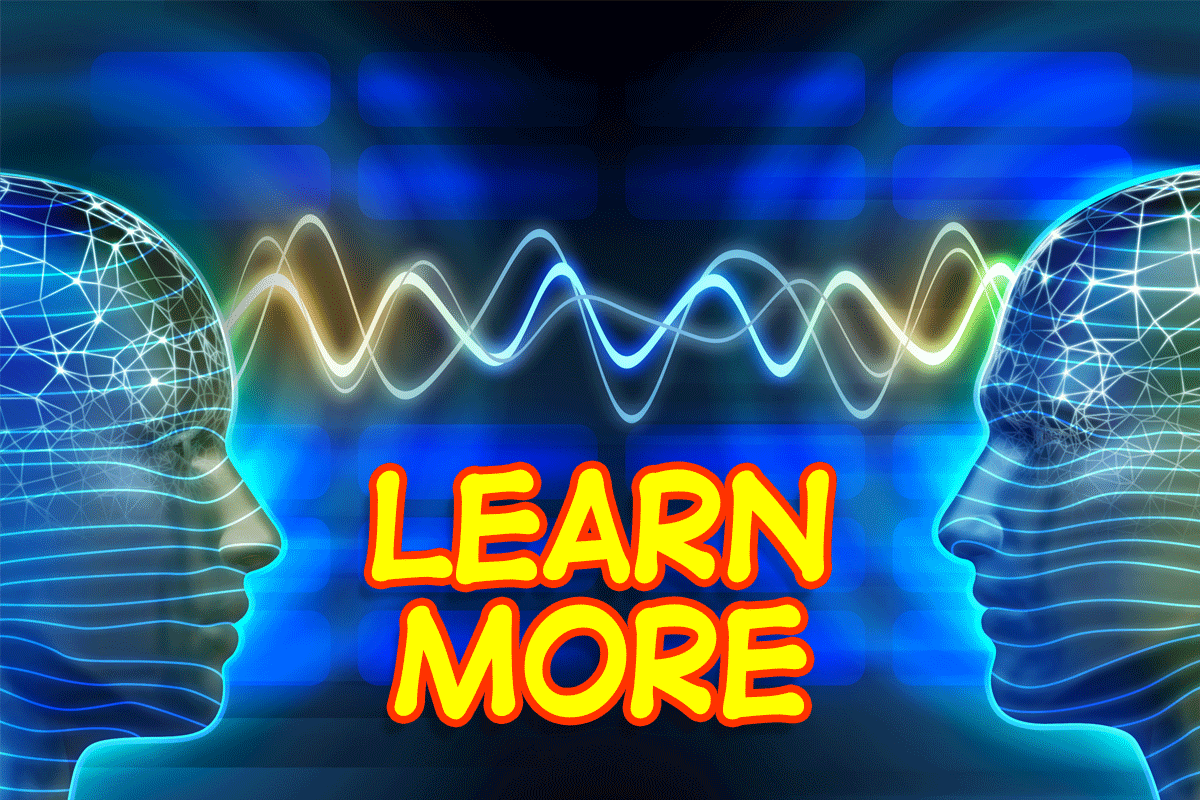Original Learning Techniques

Modeling is one of the cornerstones of NLP. It was how NLP was “invented.” (Or discovered or stolen…). Modeling is essentially how humans learn. Unfortunately, the way it’s taught in NLP seminars is a not quite as helpful as it could be. In this post we’ll explain why, and then develop a much better modeling process. As soon as you finish reading this post you can start modeling like crazy.
NLP Invention
NLP was invented (as one legend goes) when one of its founders was transcribing an audio recording of a famous therapist. He noticed that this famous therapist used the same linguistic structures over and over. He, a graduate student, presented this findings to one of his professors, who happened to be a linguist. They two of them (NLP founders) reverse engineered exactly why these patterns worked so well.
Then they went to all the other famous therapists at the time who did quick work of their patients’ problems. Essentially, they reverse engineered or modeled how these superhero therapists were so effective. Then they taught these techniques to their students. Not only did they teach them how to use the techniques, but they taught them the modeling process. Sometimes NLP is called the “study of excellence” for this very reason.
The idea is you find somebody that is good at something (excellence) and then by modeling, you can become excellent, just like them.
Modeling Limitations
However, some things can be modeled easily, some things are very difficult to model. Modeling therapists is actually pretty easy. If you’ve got access to the transcripts, you can see the questions asked and how they were answered. By applying some Transformational Grammar (Noam Chomsky) you can get a sense of the things being said, as well as the things not being said.
But as mentioned here, once these original creators of NLP taught it to the first group of students, those groups of students started teaching it to other groups of students, and so on. If you’ve ever played the telephone game in school, you know that a simple message passed around a circle can lose a lot of it’s original meaning.
Hypothetical Modeling

Some types of NLP trainers teach modeling as if it’s something you can do quickly and mostly in your imagination. The process is kind of like this. You see somebody doing something you’d like to do. You watch them do it a few times. Then you imagine you’re watching yourself do it a few times. Then you imagine it from the first person perspective. Once you imagine doing it from the first person perspective, then you go out and do it for real. This idea is helpful, but has its limitations.
One Limitation
One limitation is the difference in skill level from where you are, to where you want to be, (where your model is). For example, if you have zero experience playing the piano, modeling a piano player by simply imagining yourself in their shoes as they play the piano is not going to work. You won’t suddenly understand music theory and have all the muscle memory in your forearms and fingers to match the sounds in your head (or written on the music sheet) to the sounds that come out of the piano.
Another Limitation
Another limitation is there are many variables in many skills. Playing the piano in front of a crowed requires musical skills, but it also requires being comfortable enough to play in front of a room filled with people in tuxedos. Learning the piano requires a whole different set of skills than mastering stage fright.
Easy Modeling
Some things are easy to model. If you wanted to learn how to bake a cake, modeling is the perfect solution. Find a decent tutorial on YouTube, and watch it while you make a cake right along with your YouTube teacher.
Original Learning

All us humans learned by modeling before we learned anything else. We copied those around us until we could do what they did. This happens even when we don’t know it’s happening. When we pick up bad habits from our friends, we are unconsciously modeling them. This is why our moms yell at us and tell us not to hang around those people.
Trial And Error Learning
A lot of learning requires trial and error. Suppose you wanted to learn how to play basketball. Your coach would show you how to take a free throw, and then he’d go read the newspaper while you practiced for an hour or so. A lot of learning requires very little modeling (watching your coach do it a few times) and a lot of practice, which is the same as trial and error learning.
Apprenticeship Learning
Way back in the old days, before the created factory-worker factories (public schools) people learned by copying masters. This is what an apprenticeship was all about. You got a job with a master at a very young age and spent a lot of time learning from this. This learning was a combination of modeling and trial and error learning. This usually took several years. Back then, the name of the game was better safe than sorry. A guy who had a shop and a customer base was very careful about who he trained, and how he might let them eventually take over the business.
All Learning Requires Time

Even learning that isn’t normally associated with a skill requires time. Studying a bunch of history dates takes time and effort. There are many ways to help remember them, but they all require time and effort. The less the facts, the less the physical movement required, the shorter the time is. Learning how to hit the snooze on your alarm clock takes two seconds, then you know how forever. The more the actual data, and the more complicated movement is involved. Learning how a computer program to operate a complicated piece of machinery will take a lot of time.
Some Variables Will Be Unconscious
How do you give an effective speech? Sure, there are simple techniques like look your audience in the eye, use gestures effectively, and put in pauses in strategic locations. You could theoretically practice a speech so much that you deliver it like a skilled actor. But what if you wanted to develop the skill of speaking extemporaneously? How would you practice that? It would be very much like sports. You can practice plenty, but when game day comes, you never really know what’s going to happen, since you cannot ever predict the movements of your opponent.
Blurry Line Between Skills And Arts
Giving a prepared speech can be considered a skill. But being a skilled salesperson, who can adequately overcome any objections, maintain his cool and still get the sale is an art form as much as it is a skill. How do you practice an art form?
One of the reasons it’s considered “art” is it is created partially subconsciously, and it is appreciated partially subconsciously. There are just too many variables for our limited conscious minds to appreciate. Thousands of students graduate each year from colleges that teach the dramatic arts, but very few will become A-listers in Hollywood or on Broadway.
So, Modeling Is Hopeless Then?
No, not at all. Modeling is extremely powerful. In fact it is the one thing that may separate you from all the others in your field that have average skills. But it is only powerful if you stop thinking of it as a weird trick that you can do in your imagination. Modeling is something that needs a lot of your time and dedication. But it will allow you to access a very powerful set of skills that you can learn in very creative ways.
What’s Required

The first step is first identify the skill you’d like to learn or improve upon. Start as vaguely as you can, and then we’ll get very specific. Eventually we’ll need to break your desired skill into as many categories as we can. For example, if you wanted to become a world famous guitarist, you’d need to learn many skills, including music, showmanship, creativity, plenty of interpersonal skills, and even business skills.
Step One – Identify All The Separate Skills Required
Once you’ve got the overall skill, it’s time to separate out all of the smaller skills. The more you can identify and separate the skills, the easier it will be to practice or learn each of them individually. One of the problems that can make learning anything more complicated is trying to learn too many things at once. For example, if you wanted to become a charismatic public speaker, trying to practice eye contact, voice tonality, and carefully placed paused while trying to remember the actual words would make everything too difficult to be effective.
Put The Separate Skills Into Categories
When modeling behavior, it’s easy if one behavior is all your are modeling. Things that can be done without modeling, through book learning or trial and error practice, should be mastered first. For example, if you were intending to be a charismatic speaker, it would be easier to model the behavior after having rehearsed the actual speech several times without the added behaviors.
Practice Compartmentally
The modeling part is easiest when all the other parts have been mastered. Sometimes, however this isn’t possible. For example, if you are intending to develop interpersonal skills, trying to be friendly and outgoing while worrying about what to say may make everything too confusing. Consider separating out parts that need to be practiced, and practice them to the point of familiarity before adding on behavioral characteristics.
For example, when practicing extemporaneous speaking, you might focus only on the words, yours and theirs. Once this is easy, then you can add in some other elements of body language.
Always Map To Sports
Think of how a basketball team practices for a game, or a boxer practices for a match. They separate out all of the individual skills into different training areas. Boxers practice on heavy bags, light bags, they focus on endurance training, strength training, etc. Separate from the training is the watching of the upcoming opponent’s previous fights. This is modeling. While the boxer is watching his opponent, his simultaneously imagining fighting him.
And then while he’s focusing on his training, he’s subconsciously (or consciously) remembering his opponents fighting style. For a boxer training for a fight, modeling the behavior of his opponent is only one part of an overall strategy.
Begin Putting Elements Together
Once you’ve identified all the different parts of the overall behavior you’d like to exhibit, and you’ve been spending time in each area practicing, you can start to put them together. When you have practiced each one enough to get a feel for what a professional level behavior might be, you can watch professionals and start to model them in your imagination.
Watch First To Study Their Movements

Watch them a few times, either in person or on video, to see them behave the way you’d like to behave. Then close your eyes and imagine seeing them in your mind’s eye. Once you can accurately reproduce them in your mind’s eye, start to see yourself in their role. Once this becomes easy, practice imagining it from a first person perspective.
Model While Practicing
When you go back to practicing the individual skills, as much as you can, practice them while imagining that first person perspective situation that you created in your mind. If you are rehearsing a speech, give the speech from memory with your eyes closed while fully imagining yourself in that first person experience that you’ve created from watching your model.
Real Time Modeling
Whenever you have an opportunity to watch people behave the way you’d like to behave, you can creatively model their behavior on the spot. This is very much like apprentices learned from masters in the past. Watch a person behave a certain way, close your eyes and imagine it was you who did that, seeing it from both third person and first person perspective, and then actually try it yourself.
Model Micro Behavior
Experiment with modeling small portions of other people’s behavior. Don’t be afraid to try on different behaviors just to see what they are like. If you are a student, sit in the front of the class, and while you are watching your professor lecture, imagine it’s you giving the lecture. When you take notes, imagine hearing the professor’s voice in your own head, as if its yours.
Modeling For Generating Rapport

Rapport is essentially modeling, when it’s done consciously or unconsciously. Rapport is mirroring and matching body language and as much of the other person’s behavior as you can. Often this is done unconsciously. Humans are highly social animals. But consider next time you’re having a conversation with your friends, purposely matching and mirroring as much as you can about their behavior, rate of speech, and movements.
Always Journal
It’s hard to keep track of everything in the moment. Keeping a modeling journal can be very helpful. You can keep track of any “meta behaviors” that you are intending to take on. It’s a good way to keep track of your progress. Even if you learn one small part of an overall meta behavior each day, it will create a feeling progress, of forward momentum.
Study Acting
If possible, take an acting class at your local community college. This is a great way to learn all kinds of tricks to help behave in ways other than the way you normally behave. The more characters an actor can morph into, the better and actor they will be. The more believably an actor can morph into any character, the more successful they’ll be. To this end, acting classes are filled with fun exercises to help you study the behavior of others, and try on that behavior as if it were an article of clothing.
Be On The Lookout For Modeling Targets

Once you start practicing this, you’ll find every single person you come across can be a potential source of modeling. It’s also a great way to get out of your own head and start paying attention to those around you. Even somebody standing in front of you in line at Starbucks can be a source. Listen carefully to how they order, write it down in your modeling journal, and then try out it a day or so later.
All Humans Are Always Modeling
As mentioned before, consider that modeling is something humans are doing all the time. We pick up habits from our friends, we start to talk and behave like our favorite TV characters and friends. Why not take it up to the conscious level, and take control of this normal process? Doing so will provide you an unlimited amount of skills and creativity that you are surrounded by every day.
Learn More

Mind Persuasion has plenty of books and courses designed to help you live life much more fully, and get what you want and need much easier.
Mind Persuasion Books
Mind Persuasion Courses